Forensic Document Examination
A forensic document examiner evaluates questioned signatures and handwriting and performs a number of nondestructive tests in order to resolve issues related to ink, paper, alterations or additions after the fact, missing pages, and, in general, the authentication of various documents. A variety of technical instruments are used in the examination of questioned documents.
Handwriting Expert, Signature Forgery Expert, Forensic Document Examiner, Expert Witness
TECHNOLOGY
Olympus Trinocular Stereo-Microscope
Used for microscopic examination of documents. The trinocular attachment enables photographs to be taken of whatever is viewed through the microscope. These photographs can be incorporated easily into reports and demonstrative court charts.
Zeiss Portable Stereo-Microscope with digital camera for on site examinations.
MiScope
A MiScope is used for laboratory or on-site examinations. The MiScope is a digital microscope that gives magnifications of X40-140.
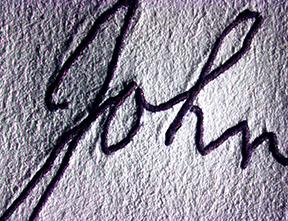
Video Spectral Comparator - 6000 (VSC-6000) and Video Spectral Comparator - 4+ (VSC-4+)
The VSCs are used to examine documents in the visible, ultraviolet, and infrared ranges of the electromagnetic spectrum. We normally see the 400nm to 700nm range of the spectrum. The VSCs can examine a document from 200nm (UV) to 1000nm (IR). Inks can be differentiated to show the use of different pens, alterations, or to disclose obliterated entries. The transmitted light feature (backlighting) shows watermarks and is useful in deciphering entries obliterated by the use of opaquing fluid.
It must be emphasized that ink comparisons with the VSCs can only differentiate inks. No conclusions can be drawn as to whether or not two inks are the same.
The examinations conducted using the VSCs are non-destructive and the images obtained can be incorporated into reports or into demonstrative court material (printed or electronic).
The VSC 4+ is portable, but it is recommended that examinations be conducted in the laboratory unless the document cannot be removed from its site.
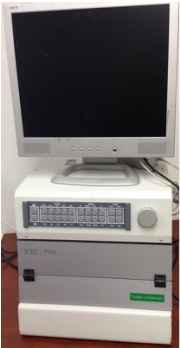
Electrostatic Detection Apparatus (ESDA) and ESDA Lite
The ESDA is used to reveal indented impressions of handwriting. Impressions from handwriting on the top page of a note pad can be detected to several pages below the top page. The impressions are permanently preserved on an acetate background. The impressions can be scanned and copied into a report or a court chart. The ESDA is very useful in detecting page substitutions and altered pages in medical and business records. Sequencing indentations and ink strokes or inkjet printing can be used to show backdated entries, added printing, or an added signature, for example. While the ESDA is considered to be non-destructive, minor amounts of toner, pencil, or ink may be removed during the processing. The documents are normally humidified for 2 to 3 minutes before processing.
The ESDA Lite is a portable ESDA that can be taken on site for indentation examinations. It is recommended that indentation examinations be conducted in the laboratory unless the document cannot be removed from its site.
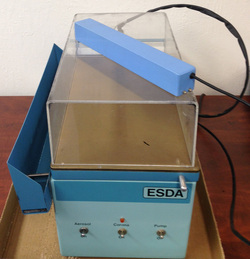
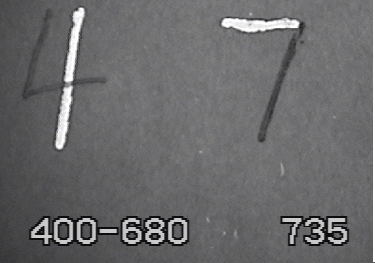
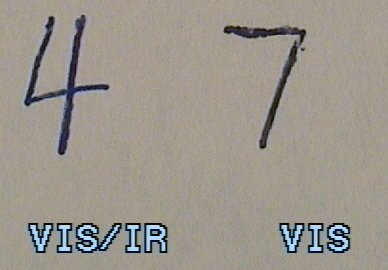
Cameras, measuring devices, and software
Adobe Photoshop is routinely used in examinations.
Testimony
Testimony is often requested for court or deposition. Findings can be demonstrated by the use of printed charts or electronically by PowerPoint or by using an ELMO Visual Presenter (Document Video Camera).